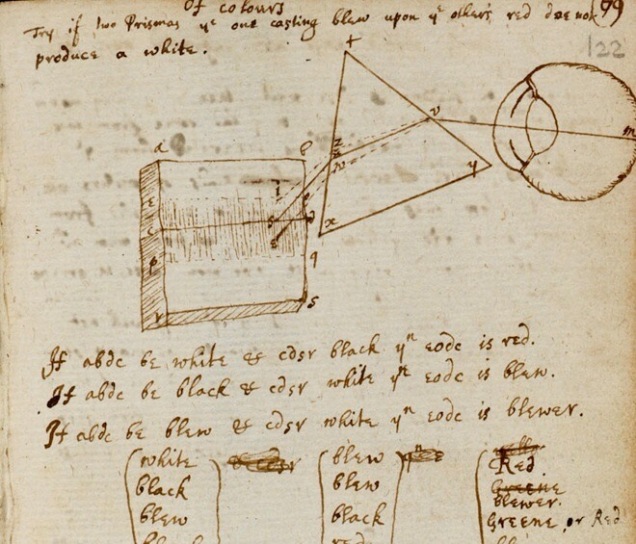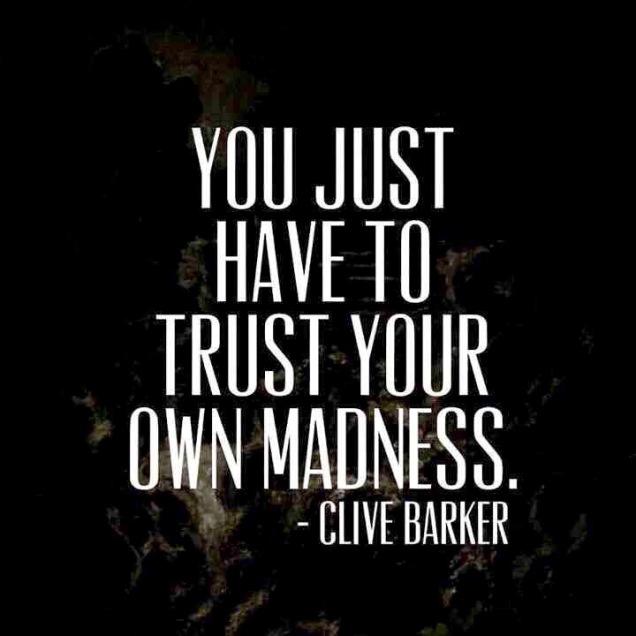
THE LARGEST COLLECTION of Isaac Newton’s papers has gone digital, committing to open-access posterity the works of one of history’s greatest scientist.
Among the works shared online by the Cambridge Digital Library are Newton’s own annotated copy of Principia Mathematica and the ‘Waste Book,’ the notebook in which a young Newton worked out the principles of calculus.
Other of his myriad accomplishments include the laws of gravity and motion, a theory of light — pictured above are notes on optics — and his construction of the first reflecting telescope.
Newton was also notoriously idiosyncratic and irascible, obsessed with the occult and vicious towards scientific rivals; a full account of his life and science can be found in James Gleick’s Isaac Newton, and a partial but entertaining fictionalization in Neal Stephenson’s Baroque Cycle. But the papers come straight from the master.
“Anyone, wherever they are, can see at the click of a mouse how Newton worked and how he went about developing his theories and experiments,” said Grant Young, the library’s digitization manager, in a press release. “Before today, anyone who wanted to see these things had to come to Cambridge. Now we’re bringing Cambridge University Library to the world.”
Approximately 4,000 pages of material are available now, and thousands more will be uploaded in coming months. On the following pages is a sampling of the the library.
Genius
Are You Insane?
” So should we believe that creative genius is connected with madness or not? Modern empirical research suggests that we should because it has pinpointed the connection between madness and creativity clearly. The most important process underlying strokes of creative genius is cognitive disinhibition—the tendency to pay attention to things that normally should be ignored or filtered out by attention because they appear irrelevant.
When Alexander Fleming noticed that a blue mold was killing off the bacteria culture in his petri dish, he could have just tossed the latter into the autoclave like any of his colleagues might have done. Instead, Fleming won the Nobel Prize for his discovery of penicillin, the antibacterial agent derived from the mold Penicillium notatum. Many people have gone for a walk in the woods and returned with annoying burrs attached to their clothing, but only George de Mestral decided to investigate further with a microscope, and thereby discover the basis for Velcro.
But cognitive disinhibition has a dark side: It is positively associated with psychopathology. For example, schizophrenics find themselves bombarded with hallucinations and delusions that they would be much better off filtering out. So why don’t the two groups become the same group? According to Harvard University psychologist Shelly Carson, the creative geniuses enjoy the asset of superior general intelligence. This intelligence introduces the necessary cognitive control that enables the person to separate the wheat from the chaff. Bizarre fantasies are divorced from realistic possibilities.
According to this conception, high intelligence is essential to creative genius, but only insofar as it collaborates with cognitive disinhibition. Exceptional intelligence alone yields useful but unoriginal and unsurprising ideas. Marilyn vos Savant made it into the Guinness Book of Records for the world’s highest recorded IQ, and yet has not managed to find a cure for cancer or even build a better mousetrap.
Some domains of creativity put far more emphasis on usefulness than on originality and surprise. In such cases, the vulnerability shared between genius and madness becomes much less critical. For example, psychopathology can be negatively correlated with creative genius in the hard sciences. The interesting exception are the scientific revolutionaries who go against the prevailing paradigms. For them, the relation is almost as positive as found for artists and writers.”
The Connection Between Genius and Crazy




You must be logged in to post a comment.